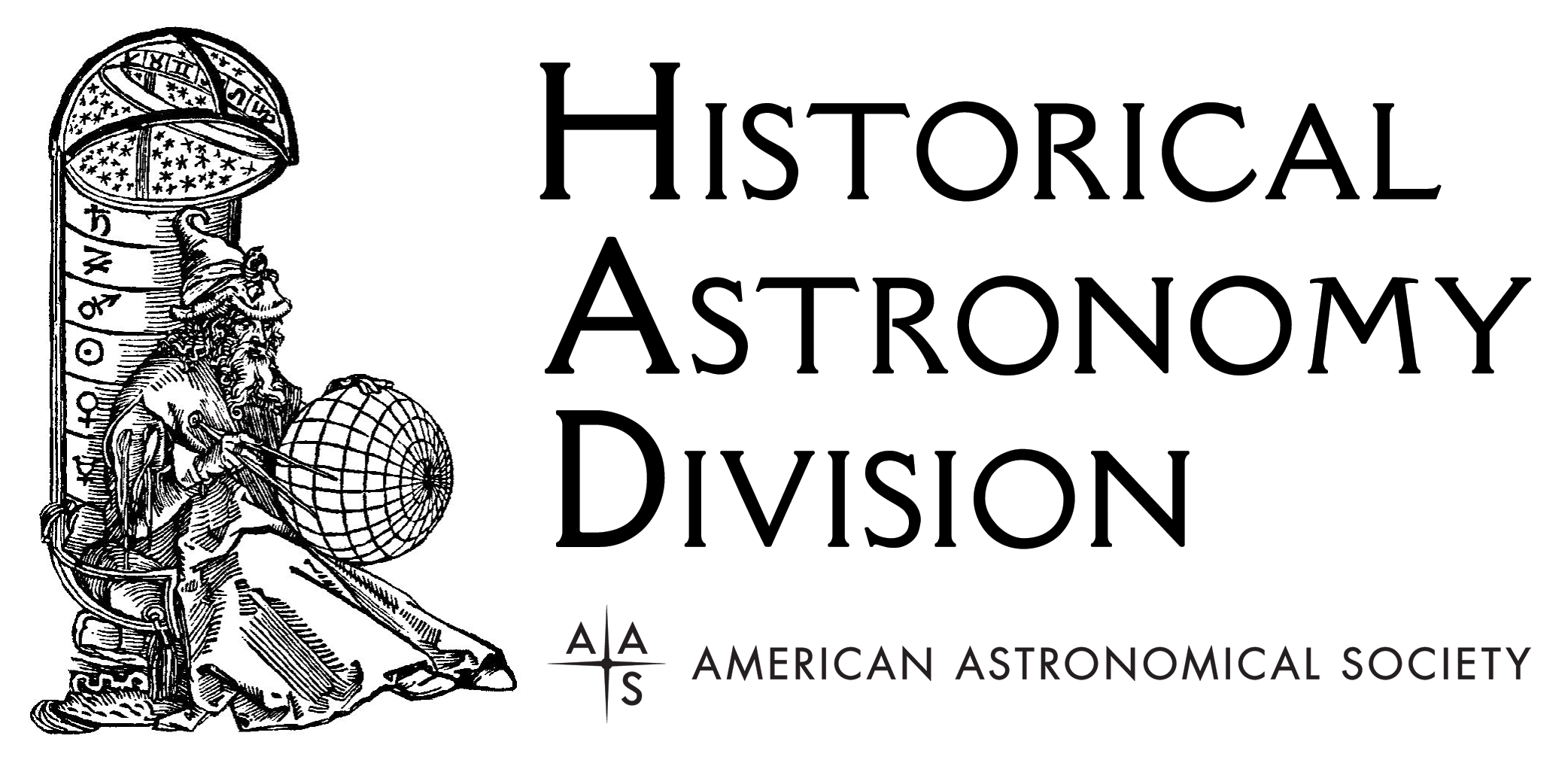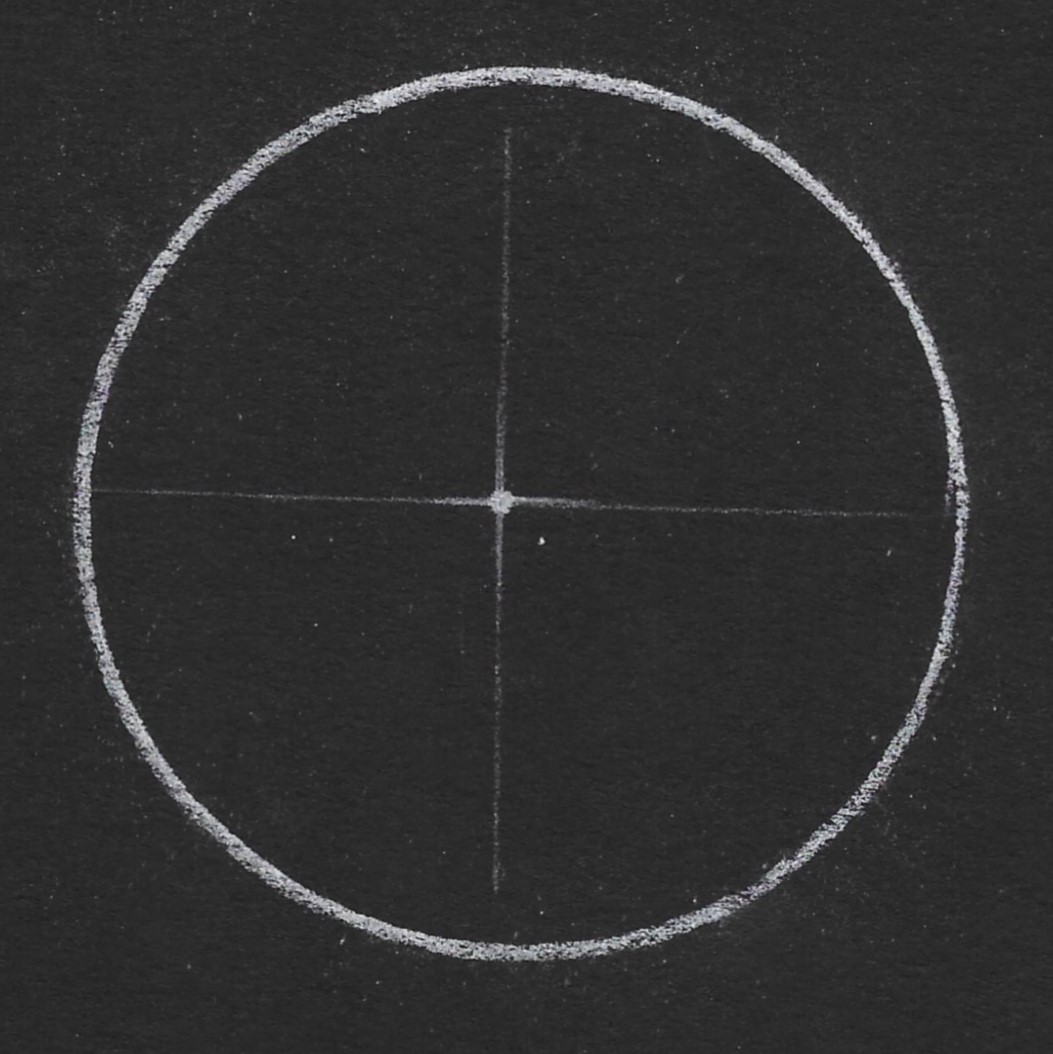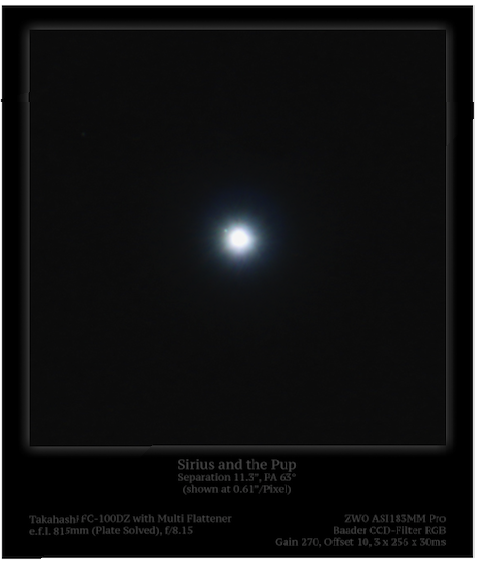This Month in Astronomical History: January 2024
Michael Marotta American Astronomical Society (Amateur Affiliate)
 Each month as part of this series from the AAS Historical Astronomy Division (HAD), an important discovery or memorable event in the history of astronomy will be highlighted. This month, Michael E. Marotta writes about the discovery of white dwarf stars. Interested in writing a short (500-word) column? Instructions along with previous history columns are available on the HAD web page.
Each month as part of this series from the AAS Historical Astronomy Division (HAD), an important discovery or memorable event in the history of astronomy will be highlighted. This month, Michael E. Marotta writes about the discovery of white dwarf stars. Interested in writing a short (500-word) column? Instructions along with previous history columns are available on the HAD web page.
White Dwarfs: Discovery and Challenge
On 31 January 1783, William Herschel recorded the first sighting of the white dwarf Omicron-2 Eridani B and red dwarf Omicron-2 Eridani C, binary companions to the star Omicron-2 Eridani A.1,2 That star is visible to the naked eye and was known to the Islamic cataloguers as Keid and listed later by Europeans as 40 Eridani. To Herschel, following the work of the Astronomer Royal, it was Flamsteed 55. On 31 January 1862, Alvan Graham Clark sighted the Pup (or Sirius B), the white dwarf companion to Sirius (also known as the Dog Star or Sirius A)1,3,4. Astronomers worked into the mid-1950s to develop consistent explanatory and predictive theories for this second-most common class of stars. (Only red dwarfs are more numerous.) And exploration continues into our time.
Ptolemy’s Almagest listed 1022 stars and catalogs by Abd al-Rahman al-Sufi (10th century CE) and Ulugh Beg (1394-1449 CE) extended that to 1,437 stars. In 1782 Johann Elbert Bode published the positions of 5,058 stars down to the 7th magnitude.5 It was not just that previously seen but uncharted stars were listed but also that more of the sky was measured and published. Better telescopes revealed more stars and Herschel and Clark were creators of optical instruments and therefore had the advantage of the best telescopes of their times. An announcement of a newly observed and measured star was not in itself startling. But the consequences were.
The royal rewards granted to William Herschel for his discovery of Uranus allowed him to pursue other projects, including a catalog of double stars. His original purpose was to pursue targets that could be measured by the trigonometry of parallax. In the 18th century, it was assumed that the stars are more or less randomly distributed, and of two stars in the same field of view the brighter is nearer and perhaps near enough to measure its distance.6 Thus Herschel found 40 Eridani BC and listed them in his catalog of double stars. Twenty years later, his accumulated research led Herschel to conclude that many binaries are not merely arrangements from Earth’s point of view but are gravitationally bound.7
Sirius B was Alvan Graham Clark’s fourth discovery of a binary.8 He communicated his find directly to George Phillips Bond at the Harvard College Observatory, as well as to other astronomers and his local newspapers.9 Working with his father (Alvan Clark) and brother (George Bassett Clark) as instrument makers, Alvan Graham Clark’s discovery was accidental. He was only testing a new 18-½ inch objective lens for chromatic aberration and he chose Sirius as the best target to betray any defects in his work.9 Bond published the announcement in Astronomische Nachrichten whence it was republished by the Royal Astronomical Society.4
Astronomers quickly correlated that observation with an earlier prediction by Friedrich Wilhelm Bessel that Sirius must have a companion because close measurements of that star’s proper motion evidenced a sinusoidal wobble in right ascension, i.e., east and west.10 In 1866, Otto Struve at the Pulkovo Observatory calculated the mass ratio of Sirius to its companion as 2.09:1.11 Considering the extreme difference in their relative brightness and therefore their diameters, this raised serious questions that were unanswerable until the development of quantum mechanics.
In a book for the general public, Sir Arthur Stanley Eddington wrote: “We learn about the stars by receiving and interpreting the messages which their light brings to us. The message of the Companion of Sirius when it was decoded ran: ‘I am composed of material 3,000 times denser than anything you have ever come across; a ton of my material would be a little nugget that you could put in a matchbox.’ What reply can one make to such a message? The reply which most of us made in 1914 was — ‘Shut up. Don’t talk nonsense.’”12
By the mid-20th century, white dwarfs were understood to be the remnants of main sequence stars that passed through the red giant phase, blew off their outer layers as planetary nebulae, and then collapsed into ultra-dense nearly dead cores in which hydrogen-helium fusion ceased. The first two white dwarfs found are orbiting larger, brighter, cooler stars. One explanation is that the more massive member of the pair pulled matter from the smaller companion, leaving it unable to continue fusion, and the smaller star collapsed. Investigations of globular clusters and open clusters suggest that white dwarfs also form in small regions of material insufficient to support nuclear fusion. White dwarfs are also known to be solitary rogues, perhaps the most numerous genus of that kind.13
The classical white dwarf is about seven to ten times hotter than our Sun of 5700 K. We now know of white dwarfs with temperatures over 100,000 K and approaching twice that.14 The classical white dwarf is a star with no hydrogen in its core, and with hydrogen-helium and carbon-cycle fusion occurring in its exterior. However, modern research with space-based telescopes delivers continuous and increasing reports of heavy elements, and debris disks suggesting the possible presence of planets and water.15

Fig. 1: Drawing of Sirius and the Pup and by commercial artist Raul Leon. 18 March 2023. Viewed with 14.5-inch Starstructure Dobsonian telescope and Tele Vue Delos 4.5 mm ocular. Sketched at the eyepiece. White charcoal pencil on black artist’s paper. Posted to https://www.cloudynights.com/topic/868506-sirius-and-sirius-b/
This version is from the artist’s blog at https://thestarsketcher.blogspot.com/2023/03/sirius-and-sirius-b-star-i… with permission.

Fig. 2: Photograph of Sirius A and B "Sirius and the Pup with FC-100DZ" by Cloudy Nights member james7ca. Takahashi FC-100DZ fluorite doublet with Takahashi 1.04X Multi Flattener to increase the focal length to 815mm (f/8.15). Camera ZWO ASI183MM Pro. Image capture with SharpCap Pro and processing with AutoStakkert!, PixInsight, and Photoshop 2023. The image captured 27 January 2023 was drizzled and reduced to the original capture scale. North is up; east is left.
Posted at: https://www.cloudynights.com/topic/862444-the-double-stars-sirius-and-i… and provided to AAS HAD with permission.

Fig. 3: Photograph of 40 Eridani ABC by Steven C. Smith, retired structural engineer. Photo taken 28 January 2020 with a Celestron 9.25 SCT and Olympus E-M10 Mk II camera at prime focus. 5 frames x 4sec ISO 1600. Software: Pixinsight.
From Smith’s website at https://doublestar.home.blog/eridani/ with permission.
References
- Fraknoi, Andrew. (2020). “This Date in Astronomical History,” Planetarian, Vol. 49. No. 4. December 2020. The calendar is downloadable at https://www.researchgate.net/publication/348358007_This_Date_in_Astrono…
- Herschel, William. (1785). “Catalogue of Double Stars,” Philosophical Transactions of the Royal Society of London, Vol. 75, pages 40-126.
- Clark, Alvan. 1889. “Autobiography of Alvan Clark,” Sidereal Messenger, Vol. 8, pages 109-117. March 1889. (Note that this is the life story of the senior Alvan Clark and in it he reports on the work of his son, Alvan Graham Clark.)
- Bond, G. (1862). “On the Companion of Sirius by Prof. G. Bond, Director of the Observatory of Harvard College,” Astronomische Nachrichten, Vol 57, page 131. March 1862. See also Monthly Notices of the Royal Astronomical Society, Vol. 22, p.170.
- Knobel, E. B. (1877). “The Chronology of Star Catalogues,” Memoirs of the Royal Astronomical Society, Vol. 43.
- Hirshfeld, Alan W. (2001). Parallax: the Race to Measure the Cosmos. W. H. Freeman and Co., New York.
- Dick, Steven J. (2013). Discovery and Classification in Astronomy: Controversy and Consensus. Cambridge University Press. Pages 116-119.
- Washington Double Star Catalog (WDS) https://crf.usno.navy.mil/wdstext but see also the amateur website, Stelle Doppie https://www.stelledoppie.it/ which was originally designed as a search engine to make the WDS easier to use.
- Holberg, J. B., and Wesemael F. (2007). “The Discovery of the Companion of Sirius and its Aftermath,” Journal for the History of Astronomy, Vol. 38, p. 161-174.
- Bessel, F. W. (1844.) “On the variations of the proper motions of Procyon and Sirius,” Monthly Notices of the Royal Astronomical Society, Vol. 6, p.136-141. (“Extract from the Translation of a Letter from Professor Bessel, dated Königsberg, 10th of August, 1844. On the Variations of the Proper Motions of Procyon and Sirius.” Communicated by Sir J. F. W. Herschel.) Bessel’s full paper was published later by Astronomische Nachrichten in two parts, “Über Veränderlichkeit der eigenen Bewegungen der Fixsterne,” in September (volume 22, Issue 12) and November (volume 22, Issue 18).
- Holberg, J. B. (2009). “The Discovery of the Existence of White Dwarf Stars: 1862 to 1930,” Journal for the History of Astronomy, Vol. 40, No. 2, May 2009, p. 137-154.
- Eddington, Arthur S. (1927). Stars and Atoms, Clarendon Press, Oxford, UK, Quoted in Discovery and Classification in Astronomy: Controversy and Consensus by Steven J. Dick; Cambridge University Press, 2013.
- Chaisson, Eric and McMillan, Steve (2017). Astronomy Today Ninth Edition, Pearson Addison-Wesley.
- Nowakowski, Tomasz. (2023). “SALT discovers new hot white dwarf and pre-white dwarf stars,” January 17, 2023 Report. https://phys.org/news/2023-01-salt-hot-white-dwarf-pre-white.html
- Farihi, J., Gänsicke, B., and Koester, D. (2013). "Water-rich Planetary Building Blocks Found Around White Dwarf," NASA Hubblesite, Space Telescope Science Institute (STScI), October 10, 2013 2:00PM (EDT) Release ID: 2013-38. https://hubblesite.org/contents/news-releases/2013/news-2013-38.html

